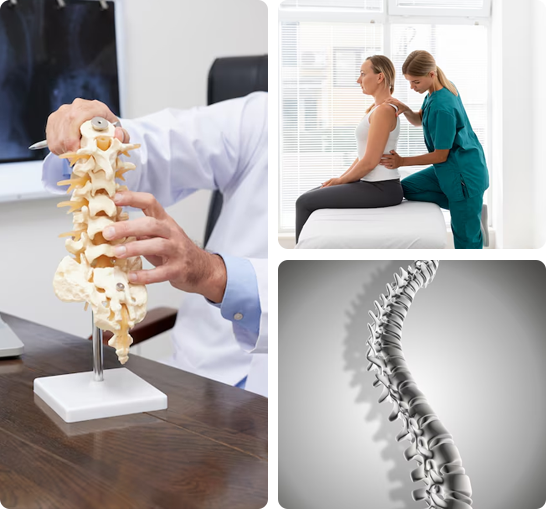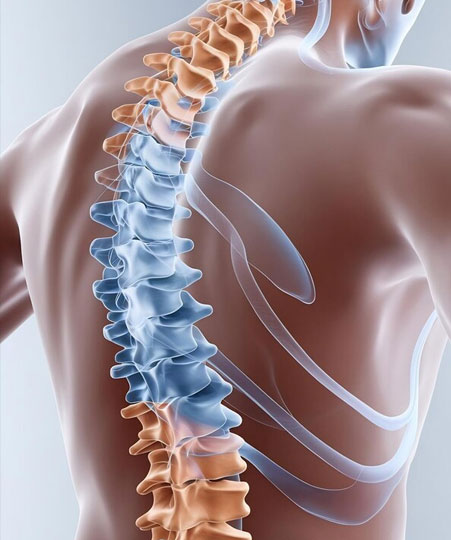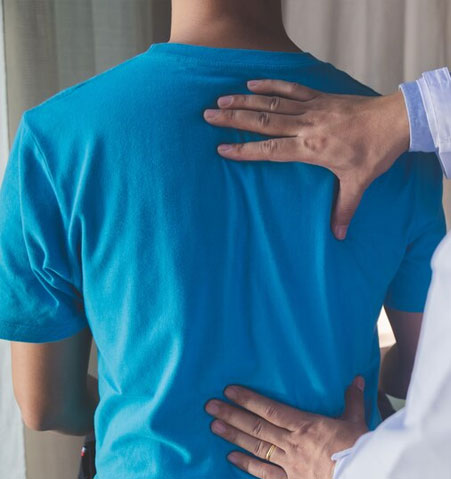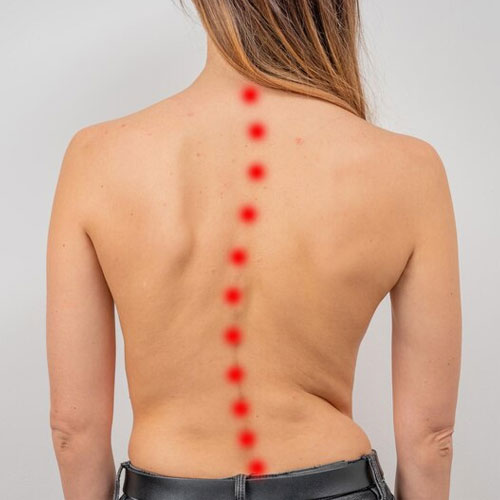Improved Breathing
Stretching chest muscles effectively opens up the rib cage, increasing lung capacity and making deep, effective breathing easier.

Scoliosis, derived from the Greek word for "crooked," refers to an abnormal curvature of the spine, resembling an "S" or "C" shape. It manifests as either structural, often emerging during adolescence, or functional, influenced by everyday habits like prolonged sitting or carrying heavy loads. While some individuals may experience little to no discomfort, others might face challenges, including restricted movement, diminished lung capacity, and pressure on the heart. Recognizable signs include uneven muscle tone, rib prominence, or mismatched hip and shoulder alignment. Understanding scoliosis is the first step toward effective management. With the right guidance and treatment, living an active and fulfilling life is entirely possible.
Scoliosis can develop subtly, and identifying early warning signs, such as misalignment or discomfort, is crucial.
Muscle imbalance occurs when one side of the spine is more developed than the other, causing misalignment.
The twisting of the rib cage in thoracic scoliosis leads to noticeable rib prominence, especially when bending.
Scoliosis can result in uneven hips or leg lengths, causing discomfort, strain, and difficulty maintaining posture.

Orthopaedic manual therapy for scoliosis focus on improving spinal alignment, enhancing mobility, and alleviating discomfort. Gentle manipulations and mobilizations target stiff joints and muscle imbalances, aiming to restore the natural curvature of the spine. Techniques such as myofascial release and stretching help lengthen tight muscles, particularly around the chest and shoulders, promoting better posture and reducing strain. Pelvic adjustments are crucial in addressing uneven leg lengths and improving overall balance. Breathing exercises may also be integrated to enhance lung capacity and alleviate thoracic tightness. By addressing the root causes and supporting the body’s natural healing mechanisms, osteopathy offers a holistic and personalized approach to managing scoliosis effectively.

Stretching chest muscles effectively opens up the rib cage, increasing lung capacity and making deep, effective breathing easier.
Elongated chest muscles counteract chronic slouching, pulling the shoulders back and helping maintain a more upright.
Loosening tight chest muscles effectively relieves strain in the upper back and neck, minimizing discomfort and promoting relaxation.
Flexible chest muscles allow for significantly greater range of motion, supporting more fluid arm and shoulder movements during activities.
Scoliosis can significantly influence daily routines, impacting physical activities, posture, and overall comfort. Tasks such as walking, bending, or lifting may become challenging due to uneven muscle strain or limited range of motion. Persistent discomfort can also affect focus and productivity during work or leisure activities. Emotional well-being may be impacted as visible spinal curvature could lower self-confidence. However, with proper care, including stretching, strengthening exercises, and targeted therapies like osteopathy, individuals can restore balance, enhance mobility, and reduce discomfort. This proactive approach improves day-to-day functionality, allowing for a more active, fulfilling lifestyle while managing scoliosis effectively and comfortably.

Embark on your journey to improved spinal health with customized osteopathic treatments designed to enhance comfort, mobility, and overall well-being.
Mobilization techniques help alleviate stiffness and enhance flexibility, enabling smoother spinal movement.
Targeted mobilization reduces tension in affected areas, helping decrease discomfort and improve overall well-being.
Encouraging better blood flow through mobilization supports healing and nourishes the tissues around the spine.
Spinal mobilization aids in correcting misalignments, promoting a balanced posture and improved physical function.
Scoliosis is an abnormal spinal curvature caused by genetics, injuries, or habitual poor posture.
Complete correction may not always be possible, but treatments can significantly improve function and reduce discomfort.
Manual therapy enhances mobility, reduces pain, and improves posture through targeted spinal and muscular treatments.
Yes, tailored exercises strengthen muscles, improve flexibility, and support spinal alignment for better management.
© All Rights Reserved by Kriston Healthcare